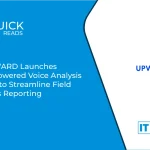株式会社プライムバリューは、自治体向けにクラウド型防災備蓄管理システム「B-order」を提供しています。2025年7月30日に発生したカムチャツカ半島東方沖地震で避難所が開設された際、自治体の避難所管理に実際に活用されました。従来、本部が複数の避難所の供給状況を把握するのに平均5時間かかっていましたが、B-orderの導入により、わずか12秒で把握できるようになりました。これにより、状況把握に要する時間は99.9%と大幅に短縮され、災害時の迅速な意思決定と避難者の安全確保に大きく貢献することが確認されました。
現場の声から見えてきた課題
災害時に避難所が開設されると、最初に直面する問題は、備蓄物資をどのように配給し、何が残っているかをどのように把握するかということです。
従来は、避難所の物資状況を紙に記録して本部に持ち帰り、エクセルに入力・集計して共有していました。そのため、本部が各拠点の物資の在庫状況を把握するのに平均5時間かかり、物資の不足やアンバランスが発生しても即座に対応できないという深刻な問題がありました。
避難所で物資が不足している』と連絡を受けても、データが揃わないと判断できない」。多くのスタッフが同じ問題に直面しています。
こちらもお読みください: パナソニックと多賀城市が連携協定を締結、宮城県が "ゼロ・カーボン都市 "の実現へ
東日本大震災の被災自治体で導入されたBオーダー:その有効性を確認
この問題を解決するために、B-orderを導入している自治体では、株式会社プライムバリューの備蓄管理システム "B-order "を導入しています。
先日のカムチャッカ半島沖地震で津波警報が発令された際の運用実績を調査したところ、避難所での物資提供時に入力した情報が即座にシステムに反映され、その約10秒後には本部が在庫状況を把握できていることを確認しました。
これにより、これまで5時間かかっていた情報伝達がほぼリアルタイムで行われるようになり、物資の再配分や追加要請など、迅速な判断が可能になりました。
導入による変化
現在、同システムを導入している自治体での運用を通じて、次のような効果が明らかになっています:
不均衡の解消:在庫の余剰と不足を直ちに特定し、救援物資を適切に再配分。
スタッフの負担軽減:スタッフはデータ収集業務から解放され、特別な支援を必要とする人のサポートや衛生管理など、人間にしかできない業務に専念することができます。
長期対応でも安心数日~数週間の避難所生活でも、最新情報を継続的に入手できます。
作業効率が向上しただけでなく、住民の安全に直結する行動の質も向上しました。
法改正による「備蓄開示」の負担増への対応
さらに、2024年1月の能登半島地震を受け、2025年7月に改正防災基本法が施行され、自治体に "年1回、備蓄物資の状況をホームページなどで公表すること "が義務付けられました。
Bオーダーを導入することで、災害時だけでなく平時から各拠点の備蓄状況をシステムで一元管理し、そのまま公開情報として活用することができます。
平時:備蓄情報の更新と公表の合理化
緊急時の対応消費状況のリアルタイム把握、不足物資の要請・調達
自治体職員にとっては、"平時 "と "災害時 "の両方をシームレスにカバーできるシステムになります。
Bオーダーは情報収集だけでなく、要望に応じて調達もできるDXツール
今回確認されたリアルタイムな供給状況の把握は、次のステップである調達業務へのスムーズな移行を可能にします。B-orderには支援要請機能が搭載されており、企業等との災害支援協定に基づき、不足している物資をリアルタイムに要請・調達することが可能になります。これにより、情報収集から調達まで一括して行える環境を構築します。
プライム・バリューの取り組み
今回の導入効果確認により、B-orderが災害対応情報の「鮮度」を保ち、職員の負担を軽減し、住民の命を守る有効な手段であることが示されました。
プライム・バリュー 株式会社B-orderは、B-orderの提供を通じて、全国の自治体のデジタルトランスフォーメーションを支援し、日本の災害対応力を新たなステージに引き上げます。
ソース PRタイムズ







